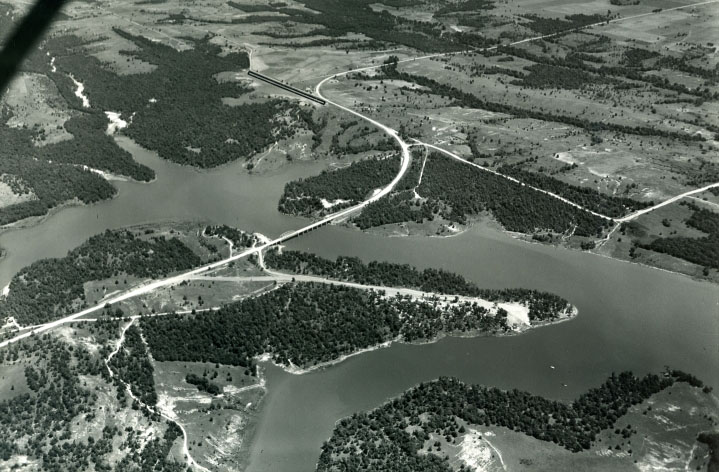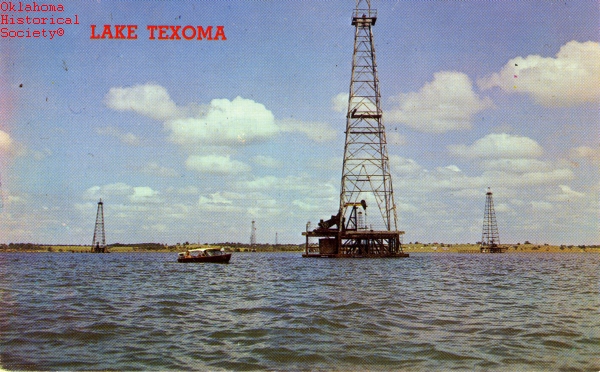
LAKE TEXOMA.
Created by the 1938 to 1944 construction of Denison Dam on the Red River, 75 miles north of Dallas, Texas, and 121 miles south of Oklahoma City, Lake Texoma impounds eighty-eight thousand surface-acres of water. Straddling the border between Oklahoma and Texas, the serpentine-shaped lake has 580 miles of shoreline and a capacity of 5,312,300 acre-feet (greater than 2.6 million acre-feet are in Oklahoma). It is the largest in the U.S. Army Corps of Engineers Tulsa District and is the twelfth largest Corps-administered lake in the nation. The dam is capable of generating seventy thousand kilowatts of power and has been estimated to save as much as $90 million from flood damage, but the lake's greatest economic impact is in terms of recreation. Between six and nine million people visit the lake annually for outdoor activities including boating, fishing, camping, and hiking.
Lake Texoma is important as a wildlife habitat. Stocked with species of fish such as crappie, bluegill, and catfish, the lake is best known for its striper bass. Texoma is one of the few reservoirs where this species, native to ocean waters, naturally reproduces. Critical for conservation, the lake area also includes the Hagerman and Tishomingo National Wildlife refuges. Together comprising approximately thirty thousand acres of marsh, ponds, and upland prairie, these two preserves are home to a number of native species, including quail, deer, bobcats, and wild turkey. Equally significant, the lake is the southern terminus for a variety of migrating waterfowl, including Canadian geese, ducks, and even bald eagles.
An important recreation destination, the lake includes a number of private marinas, campgrounds, resorts, and other concessions that generate millions in tax dollars for the local economy. Also adjacent are fifteen Corps of Engineers campgrounds, Oklahoma's Lake Texoma State Park and state-owned resort lodge, and Texas's Eisenhower State Park. In addition to its importance as a wildlife habitat and recreation destination, the lake area also supports significant agricultural, oil, and manufacturing interests.
See Also
BIRDS, CAMPING, ENVIRONMENT AND CULTURAL ECOLOGY, FISHING, LAKES AND RESERVOIRS, RED RIVER, RIVERS AND STREAMS, WATER COMPACTS, WATER QUALITY ACTS







